At #NeoCon09: The Dramatic Textiles of Maharam
New York-based textile company Maharam has been around a long time—since 1902 to be exact. Given that Maharam experienced twentieth-century fabric design firsthand, it should come as no surprise that the company knows its materials. Maharam began as a specialist in theatrical textiles, then in the 1960s graduated to contract textiles for commercial applications. From arts and crafts patterns of the early 20th century to geometric collections of the mid century, Maharam has witnessed the shifts in fabric design—all the while maintaining a family-run business (now in its fourth generation).
Eames Dot Pattern. Design re-issue by Charles and Ray Eames for Maharam.
The Maharam Design Studio develops the company’s exclusive and wide-ranging collections, which include “re-editions of enduring designs of the twentieth century’s most noted visionaries.” It is this collection, Textiles of The 20th Century®, that deserves special attention. The most famous fabrics in their reissue library may very well be those conceived by Charles and Ray Eames, including Dot Pattern and Sea Things, both from 1947. Another designer of note is Alexander Girard, the modernist architect and designer who served as Director of Herman Miller’s Textile Division in the 50s and 60s; Girard’s bold, geometric Roman Stripe of 1952 and his folkloric, dizzying Millerstripe of 1973 retain their textural appeal. But it is Josef Hoffmann, the founder of Wiener Werkstätte (Vienna Workshop), who has captured my fancy with his Design 9297 pattern. Influenced by the Austrian Arts and Crafts Movement, the Wiener Werkstätte worked against gingerbread ornamentation and toward simplicity: “Josef Hoffmann is noted for his prescient shift away from the literal, representational patterns of the times, toward the abstracted, geometrical motifs of early modernism.” These motifs are nowhere more captivating than in Design 9297, a spirited repeat of curvilinear forms inset with small dots. Although it was created in 1913, Design 9297 was never produced, which is why it “retains the name assigned to it in the mill archive.” Now manufactured by Maharam, who researched Hoffmann’s colors from his other work, Design 9297 revives the original, tapestry trial sample and reinvigorates it by using a satin weave that provides sheen.
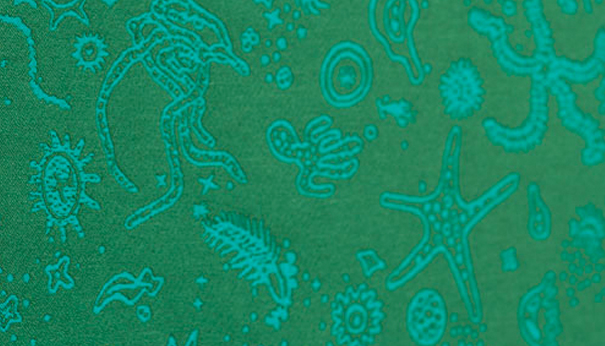
Sea Things. Design re-issue by Charles and Ray Eames for Maharam.
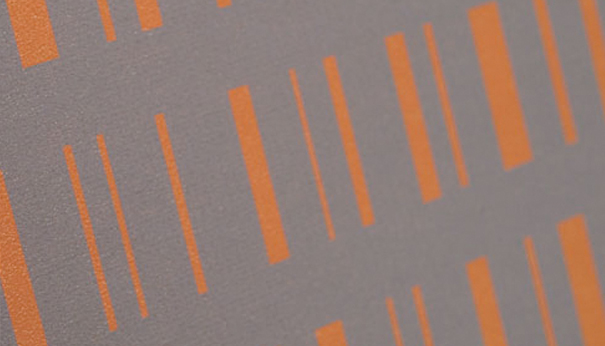
Roman Stripe. Designed by Alexander Girard for Maharam.
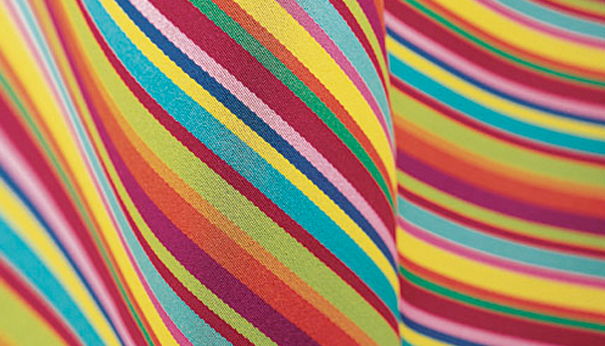
Millerstripe. Designed by Alexander Girard for Maharam.
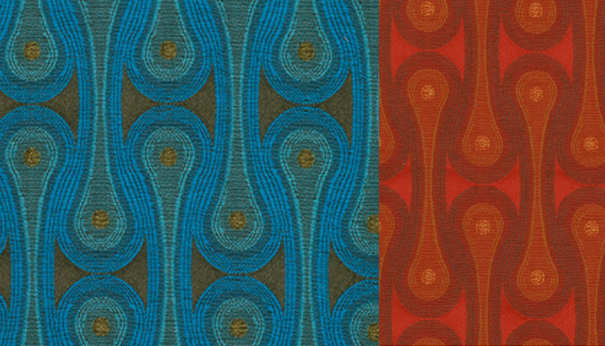
Design 9297. Designed by Josef Hoffman and reproduced by Maharam.
Design 9297 comes 55″ wide in ash, olive, lake, ocher, scarlet, peacock, umbra, and magenta. Composed of 51% cotton, 45% rayon, and 4% polyester, Hoffmann’s material is ideal for seating. “The strikingly modern and graphic nature” of Design 9297 works well with clean, straightforward pieces—furniture where you least expect such a burst of pattern and intense color. In a dining room, I’d like to see a duo of armchairs upholstered in Design 9297 paired with a quartet of Philippe Starck’s Louis Ghost Chairs. In the living room, how about using Hoffmann’s textile on an Eames Lounge Chair? With the impending NeoCon 09 fast approaching, I’m hoping to see how Maharam employs Design 9297. If the material is absent from their exhibit, I will surely have to cry tears dramatic enough for Maharam, the company that began in the theater.

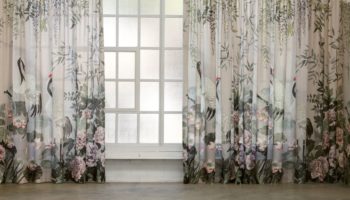
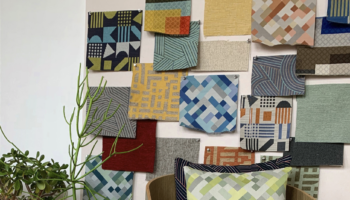

Leave a Reply